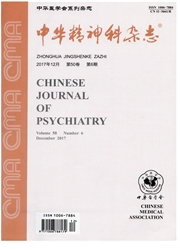

 中文摘要:
中文摘要:
目的研究不同刺激对条件性恐惧大鼠的行为、海马CA1区兴奋性突触后电位(EPSP)的长时程增强(LTP)及长时程抑制(LTD)的影响。方法将106只大鼠分为7个实验组和4个行为对照组,检测其活体海马CA1区EPSP的LTP和LTD。(1)应激:①空白对照组(11只)除外,将6个实验组大鼠分别在A箱(应激箱)和B箱(非应激箱)中适应2d,第3天在A箱中给予20个条件性光刺激(CS)和足底电击(应激),将②急性应激组(8只)在应激后立即检测,③无暴露组(11只)在应激后24h后检测;(2)行为学观察:第4天将其余4组分别暴露于A箱(④A暴露组,17只)和B箱(⑤B暴露组,11只)中,并在不同刺激下(⑥A暴露+1CS组,10只;⑦B暴露+1CS组,11只)观察其僵住行为(共1h,分3个连续时相,每个时相20min;自第3个时相开始时给予或不给予1次CS)。随后进行检测。相应的4个行为对照组大鼠接受与④一⑦组同样的处理,但不予电击和EPSP检测。结果(1)僵住行为:各实验组在3个时相中的僵住时间比例均高于各自的对照组(P≤O.01)。在第3个时相中,A暴露组、A暴露+1CS组、B暴露+1CS组的僵住时间比例均高于B暴露组(P≤0.01)。(2)EPSP:经高频刺激,除急性应激组和A暴露+1CS组外,空白对照组、无暴露组、A暴露组、B暴露组和B暴露+1CS组均诱导出m(P〈0.01和P〈0.05)。经低频刺激后,急性应激组和A暴露+1CS组大鼠的海马CA1区可稳定地诱导出LTD(P〈O.01和P〈0.05)。结论不同刺激可引起条件性恐惧大鼠长时间的僵住行为,其海马CA1区突触可塑性发生异质性改变。
 英文摘要:
英文摘要:
Objective To explore the effects of different stimuli on behavior and synaptic plasticity in hippocampal CA1 area of fear conditioned rats. Methods The male adult Sprague-Dawley rats were subjected to 30 rain of confinement in two types of Skinner boxes, one with stainless bars bottom labeled as A and the other with foraminulate plexigtass bottom as B, for two consecutive days respectively. On the 3rd day, the rats were given a stress of 20-time photostimulation paired with footshock in A box. After 24 hours, the freezing behavior (a measure of retrieval of conditioned fear memory) was recorded in response to 1-hour exposure to A or B box, with or without one-time conditioned photostimulation (CPS) at the 41^st min during exposure. Then the long-term potentiation (LTP) and long-term depression (LTD) in the CA1 area were immediately measured under anesthesia. Correspondingly, the behavioral control animals were given the similar treatment without receiving footshock and LTP/LTD examination. Results The rats in A box ( with or without CPS at the 41^st min during the exposure) were triggered marked freezing behavior. The freezing behavior triggered in B box was considerably strong with somewhat decrease developing during the later exposure (the last 20 min of exposure), which could be prevented by 1 CPS given at onset of the late exposure. LTP blockade and LTD facilitation in hippocampus CA1 area could be seen immediately after the stress; but such LTP blockade restored partially while LTD facilitation disappeared 24 hours after the stress. Both rats exposed to A and B expressed similar LTP and no LTD, which were not different from that of those taken out of their home cages for synaptic plasticity examination 24 hours after the stress. However, rats exposed to A with one time CPS at onset of the late exposure showed LTP blockade and LTD facilitation, while those to B with one time CPS showed LTP restoring (reaching the level of the naYve controls) and no LTD facilitation. Conclusion The
 同期刊论文项目
同期刊论文项目
 同项目期刊论文
同项目期刊论文
 期刊信息
期刊信息
